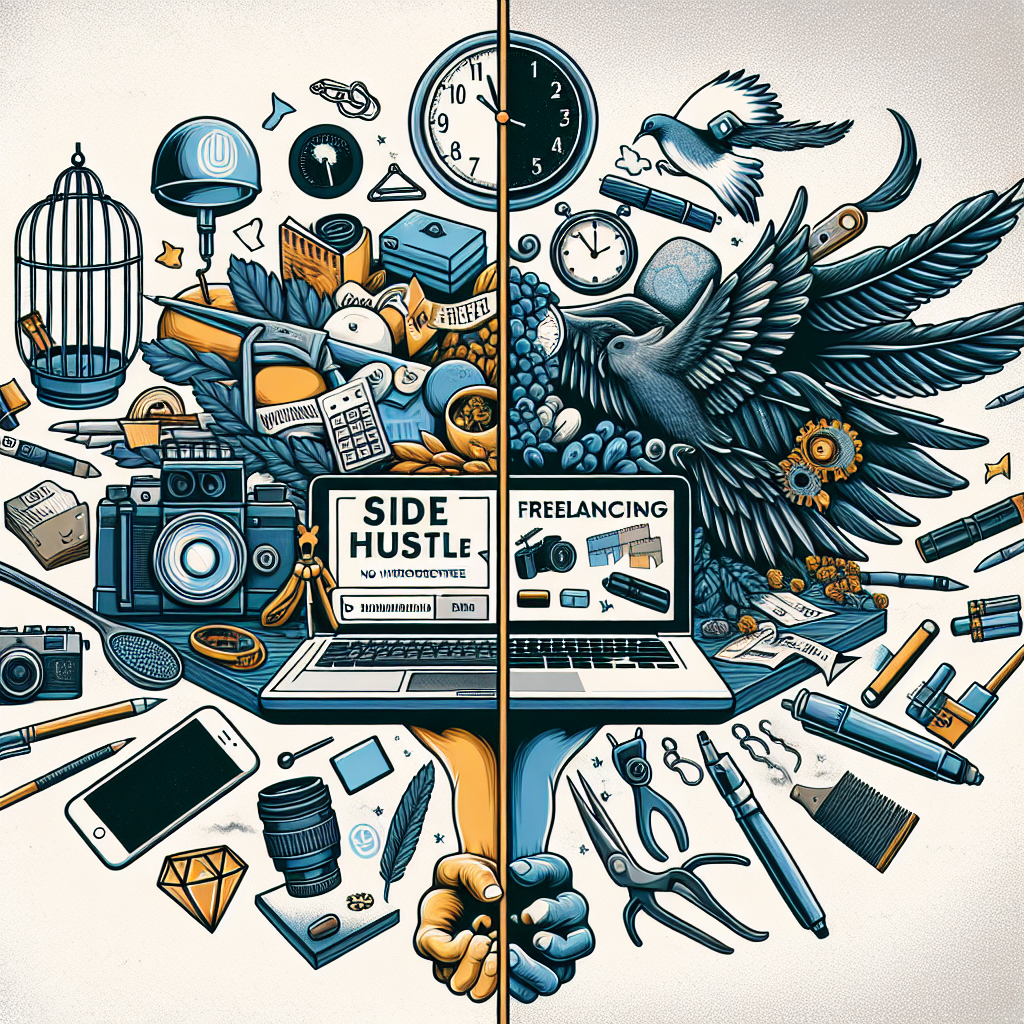Have you ever wondered about the difference between a side hustle and freelancing? Well, look no further, because this article is here to give you the lowdown. Both side hustles and freelancing offer opportunities to make extra money outside of your regular job, but they differ in some key aspects. A side hustle is typically a part-time gig that allows you to pursue your passions and interests while earning a supplementary income, while freelancing involves offering your skills and services on a project-by-project basis. So, whether you’re looking for a side gig or considering freelancing as a full-time career, read on to discover the nuances between these two options and find the perfect fit for you.
Side Hustle vs. Freelancing: What’s the Difference?
If you’re looking to earn some extra cash or explore your entrepreneurial spirit, you may have come across the terms “side hustle” and “freelancing.” While both options offer opportunities to make money outside of traditional full-time employment, there are some key differences to consider. In this article, we’ll delve into the definitions of side hustles and freelancing, explore their respective benefits, provide examples, and help you determine which path might be the best fit for you.
Definition of Side Hustle
A side hustle refers to any work or business venture that provides you with an additional source of income alongside your primary job or main source of income. It is typically an activity pursued outside of regular working hours and can range from small-scale gigs to more substantial endeavors. Side hustles are often driven by passion, personal interests, or a desire to explore a new skill or hobby.
1.1 Side Hustle as an Additional Source of Income
One of the primary reasons people pursue a side hustle is to supplement their income. Whether you’re saving up for a dream vacation, paying off debt, or simply want some extra spending money, a side hustle can provide a financial boost. By dedicating a few hours each week to your side venture, you can bring in additional cash that can be used to meet your financial goals.
1.2 Flexibility for Side Hustle
One major advantage of a side hustle is the flexibility it offers. Unlike a traditional job, where you have set hours and obligations, a side hustle can be tailored to fit your schedule. You can choose to work on your side venture during evenings, weekends, or whenever it suits you best. This flexibility allows you to maintain your regular job while still pursuing your entrepreneurial aspirations.
1.3 Examples of Side Hustle
The possibilities for side hustles are endless and can be tailored to your skills, interests, and available time. Some popular examples include:
- Offering freelance writing or graphic design services
- Starting an online store or dropshipping business
- Becoming an affiliate marketer
- Teaching a skill or offering coaching services
- Renting out a spare room or property on Airbnb
- Creating and selling handmade crafts or artwork

Definition of Freelancing
Freelancing, on the other hand, refers to a self-employment arrangement where individuals provide their services to clients on a project-by-project basis. Freelancers are often hired for their specialized skills and expertise, and they typically work remotely. Unlike a side hustle, freelancing is more focused on providing services to clients rather than exploring personal passions or hobbies.
2.1 Freelancing as Self-Employment
As a freelancer, you are essentially your own boss. You have the freedom to choose which projects to take on, set your own rates, and work on your own terms. While freelancers are responsible for finding clients and managing their workload, they also have the opportunity to build a portfolio, expand their skill set, and potentially earn a full-time income from their freelance work.
2.2 Flexibility for Freelancers
Similar to side hustles, freelancing offers flexibility in terms of when and where you work. As a freelancer, you have the ability to work from any location, whether it be a home office, a coffee shop, or while traveling. This freedom allows you to create a work-life balance that suits your needs and preferences.
2.3 Examples of Freelancing
Freelancing encompasses a wide range of industries and professions. Some common examples include:
- Writing and editing
- Graphic design
- Web development
- Marketing and advertising
- Photography and videography
- Consulting and coaching
- Virtual assistance
Personal Preference
When deciding between a side hustle and freelancing, personal preference plays a significant role. Consider your goals, interests, and availability when making your decision. If you have a passion or hobby you want to explore while making extra money, a side hustle might be the perfect fit. On the other hand, if you want to fully embrace self-employment and have specialized skills to offer, freelancing could be the ideal path for you.
Ultimately, whether you choose a side hustle or freelancing, both options provide opportunities for personal and financial growth. It’s important to assess your skills, passions, and availability to make an informed decision that aligns with your goals and lifestyle. So, dive in, explore your options, and enjoy the journey of turning your skills and passions into a fulfilling and rewarding endeavor.

